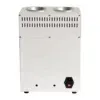 English
English



-
 Afrikaans
Afrikaans -
 Albanian
Albanian -
 Amharic
Amharic -
 Arabic
Arabic -
 Armenian
Armenian -
 Azerbaijani
Azerbaijani -
 Basque
Basque -
 Belarusian
Belarusian -
 Bengali
Bengali -
 Bosnian
Bosnian -
 Bulgarian
Bulgarian -
 Catalan
Catalan -
 Cebuano
Cebuano -
 China
China -
 China (Taiwan)
China (Taiwan) -
 Corsican
Corsican -
 Croatian
Croatian -
 Czech
Czech -
 Danish
Danish -
 Dutch
Dutch -
 English
English -
 Esperanto
Esperanto -
 Estonian
Estonian -
 Finnish
Finnish -
 French
French -
 Frisian
Frisian -
 Galician
Galician -
 Georgian
Georgian -
 German
German -
 Greek
Greek -
 Gujarati
Gujarati -
 Haitian Creole
Haitian Creole -
 hausa
hausa -
 hawaiian
hawaiian -
 Hebrew
Hebrew -
 Hindi
Hindi -
 Miao
Miao -
 Hungarian
Hungarian -
 Icelandic
Icelandic -
 igbo
igbo -
 Indonesian
Indonesian -
 irish
irish -
 Italian
Italian -
 Japanese
Japanese -
 Javanese
Javanese -
 Kannada
Kannada -
 kazakh
kazakh -
 Khmer
Khmer -
 Rwandese
Rwandese -
 Korean
Korean -
 Kurdish
Kurdish -
 Kyrgyz
Kyrgyz -
 Lao
Lao -
 Latin
Latin -
 Latvian
Latvian -
 Lithuanian
Lithuanian -
 Luxembourgish
Luxembourgish -
 Macedonian
Macedonian -
 Malgashi
Malgashi -
 Malay
Malay -
 Malayalam
Malayalam -
 Maltese
Maltese -
 Maori
Maori -
 Marathi
Marathi -
 Mongolian
Mongolian -
 Myanmar
Myanmar -
 Nepali
Nepali -
 Norwegian
Norwegian -
 Norwegian
Norwegian -
 Occitan
Occitan -
 Pashto
Pashto -
 Persian
Persian -
 Polish
Polish -
 Portuguese
Portuguese -
 Punjabi
Punjabi -
 Romanian
Romanian -
 Russian
Russian -
 Samoan
Samoan -
 Scottish Gaelic
Scottish Gaelic -
 Serbian
Serbian -
 Sesotho
Sesotho -
 Shona
Shona -
 Sindhi
Sindhi -
 Sinhala
Sinhala -
 Slovak
Slovak -
 Slovenian
Slovenian -
 Somali
Somali -
 Spanish
Spanish -
 Sundanese
Sundanese -
 Swahili
Swahili -
 Swedish
Swedish -
 Tagalog
Tagalog -
 Tajik
Tajik -
 Tamil
Tamil -
 Tatar
Tatar -
 Telugu
Telugu -
 Thai
Thai -
 Turkish
Turkish -
 Turkmen
Turkmen -
 Ukrainian
Ukrainian -
 Urdu
Urdu -
 Uighur
Uighur -
 Uzbek
Uzbek -
 Vietnamese
Vietnamese -
 Welsh
Welsh -
 Bantu
Bantu -
 Yiddish
Yiddish -
 Yoruba
Yoruba -
 Zulu
Zulu
gas chromatography mass spectrometry machine
Gas Chromatography Mass Spectrometry An Essential Analytical Tool
Gas chromatography-mass spectrometry (GC-MS) is a powerful analytical technique that combines the capabilities of gas chromatography (GC) and mass spectrometry (MS) to identify and quantify compounds in complex mixtures
. This integrated approach is widely used in various fields, including environmental monitoring, pharmaceuticals, forensics, and food safety, due to its sensitivity, specificity, and versatility.Understanding the Principles of GC-MS
At its core, GC-MS operates in two primary stages. The first stage involves gas chromatography, where a sample is vaporized and carried through a column by an inert gas, usually helium or nitrogen. The column is coated with a stationary phase that interacts with the components of the sample differently based on their chemical properties (such as volatility and polarity). As the sample moves through the column, its components separate, with more volatile compounds eluting earlier than less volatile ones.
Once the compounds have been separated, they enter the mass spectrometer for the second stage of analysis. Mass spectrometry provides detailed information about the molecular weight and structure of the compounds. In the MS, the separated compounds are ionized, typically through electron impact or chemical ionization, leading to the formation of charged fragments. These ions are then accelerated through an electric field and analyzed based on their mass-to-charge ratio (m/z). The output is a mass spectrum that serves as a unique fingerprint for each compound, allowing for precise identification and quantification.
Applications of GC-MS
The applications of GC-MS are extensive and impactful. In environmental science, it is used for detecting pollutants in air, water, and soil, enabling regulatory bodies to monitor compliance with environmental standards. For example, GC-MS can identify trace amounts of pesticides or volatile organic compounds, assisting in environmental cleanup efforts and health risk assessments.
gas chromatography mass spectrometry machine

In the pharmaceutical industry, GC-MS plays a critical role in drug development and quality control. It helps in the identification of active pharmaceutical ingredients and their impurities, ensuring safety and efficacy. Additionally, the method is essential in forensic science for toxicology analysis, where it can detect drugs and metabolites in biological samples, supporting legal investigations.
Food safety and quality assurance also benefit from GC-MS. It is employed to detect foodborne contaminants and adulterants, as well as to monitor flavors and fragrances. The technique can identify and quantify natural and synthetic flavor compounds in food products, ensuring compliance with food safety standards.
Advantages of GC-MS
The combination of gas chromatography and mass spectrometry offers several advantages. The high resolution and sensitivity of GC allow for the separation of complex mixtures, while mass spectrometry provides highly specific identification capabilities. GC-MS can detect compounds at very low concentrations, often in the parts per billion range, making it an invaluable tool for trace analysis.
Moreover, the technique requires minimal sample preparation, which streamlines the analytical process. Automated systems and advanced software have further enhanced the efficiency and reproducibility of GC-MS analyses, allowing researchers to obtain reliable results quickly.
Conclusion
Gas chromatography-mass spectrometry is a cornerstone of analytical chemistry, providing detailed insights into the chemical composition of various samples. Its applications span multiple fields, from environmental monitoring to pharmaceuticals, illustrating its versatility and importance. As technology advances, we can expect further enhancements to GC-MS capabilities, ensuring its continued relevance in scientific research and industry applications. For anyone involved in analytical work, understanding GC-MS is essential for harnessing its full potential in solving complex analytical challenges.
-
Testing Equipment Industry Sees Major Advancements in 2025: Smart & Precision Technologies Lead the WayNewsJun.06,2025
-
Applications of Direct Current Generators in Renewable Energy SystemsNewsJun.05,2025
-
Hipot Tester Calibration and Accuracy GuidelinesNewsJun.05,2025
-
Digital Circuit Breaker Analyzer Features and BenefitsNewsJun.05,2025
-
Benefits of Real-Time Power Quality Monitoring Devices for Industrial EfficiencyNewsJun.05,2025
-
Earth Fault Loop Testing in High-Rise Building Electrical SystemsNewsJun.05,2025



